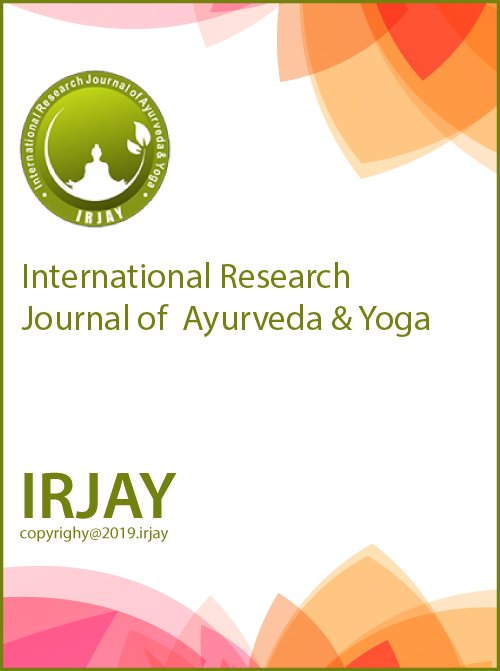Role of Yoga and Pranayama in Anxiety: A Review Article
DOI:
https://doi.org/10.48165/IRJAY.2023.6120Keywords:
Anxiety, Meditation, Psychiatric disorders YogaAbstract
In India, rates of anxiety are quite high in the general population with women, young adults and the elderly particularly vulnerable. In recent years, Holistic approaches are gaining increasing popularity in the management of psychiatric disorders. Yoga is among the oldest sciences with a holistic approach and hence, has been studied extensively in psychiatry. This increase in popularity is partly due to interest in how this practice, with its aspects of mindfulness and meditation, can reduce anxiety. In yoga, physical postures and breathing exercises improve muscle strength, flexibility, blood circulation and oxygen uptake as well as hormone function. In addition, the relaxation induced by meditation helps to stabilize the autonomic nervous system with a tendency towards parasympathetic dominance. Physiological benefits which follow, help yoga practitioners become more resilient to stressful conditions.
Downloads
References
Agarwal S.K, Swasthavritta Vigyan,Chaukhambhu Orientalia Varansi, 2009.pp.158
Aaron T., Greenberg. Anxiety Disorders And Phobias: A Cognitive Perspective. Basic Books, 2005
Marjorie R, et al. Panic And Generalized Anxiety Disorders: Developmental Antecedents And Precipitants. Archives Of General Psychiatry 39.6 (1982): 687-689.
Marjorie R, et al. Panic And Generalized Anxiety Disorders: Developmental Antecedents And Precipitants. Archives Of General Psychiatry 39.6 (1982): 687-689.
Aaron T., Greenberg. Anxiety Disorders And Phobias: A Cognitive Perspective. Basic Books, 2005.
Tripathi K, Gherand Samhita, Swami Anant Bharti, Chaukhambha Orientalia,Varanasi 2009.
Agarwal S.K, Swasthavritta Vigyan, Chaukhambhu Orientalia Varansi, 2009. pp.158
Agarwal S.K, Swasthavritta Vigyan, Chaukhambhu Orientalia Varansi, 2009. pp.158
Tripathi K, Gherand Samhita, Swami Anant Bharti, Chaukhambha Orientalia,Varanasi 2009.
Aggarwal S.K, Hathyog Pradipika, Chaukhambhu Orientalia Varansi, 2012
Nancy D, The Effect Of Pranayama On Test Anxiety And Test Performance
Https://Www.Ncbi.Nlm.Nih.Gov/Pmc/Articles/PMC3573 544
Aggarwal S.K, Hathyog Pradipika, Chaukhambhu Orientalia Varansi, 2012
Aggarwal S.K, Hathyog Pradipika, Chaukhambhu Orientalia Varansi, 2012
Nancy D, Effects Of Bhramari Pranayama On Health – A Systematic Review
Https://Www.Ncbi.Nlm.Nih.Gov/Pmc/Articles/PMC5 755957/
Iyengar, B.K.S.(1998). Light On Pranayama: The Yogic Art Of Breathing. (1996). Meditation And Attention Regulation. Journal Of Indian Psychology, 14(1&2),26-30.
D. H. (1988). Anxiety And Its Disorders: The Nature And Treatment Of Anxiety And Panic. 14(1&2),26-30. 17. Vijyalaxmi A. (1996). Effect Of Yogic Practice On Attitudes Towards Yoga And Mental Health Of Adults. Prachi Journal Of Psycho-Cultural Dimentions, 12(2), 117- 120.
Brown R. P., (2005). Sudarshan Kriya Yogic Breathing In The Treatment Of Stress, Anxiety, And Depression: Part II—Clinical Applications And Guidelines. JACM, 11(4), 711-717.

